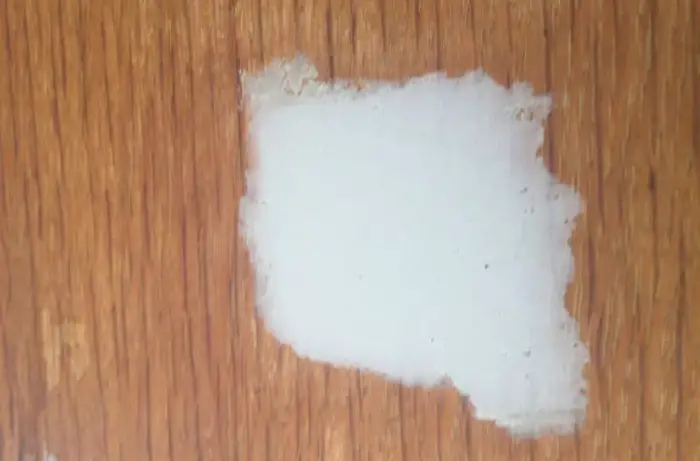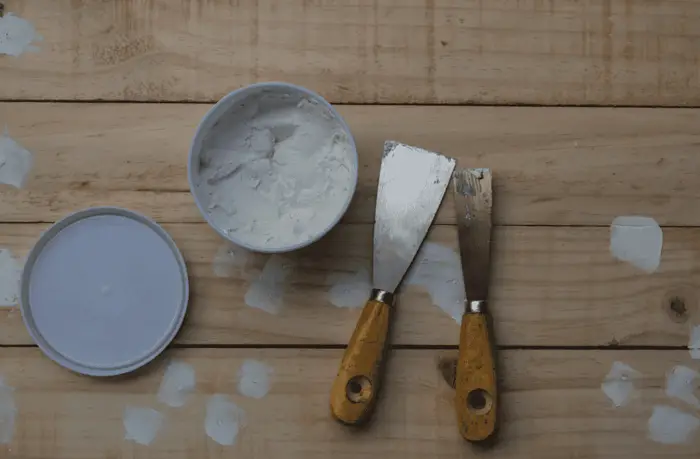How Long Does Bondo Take to Dry? Factors That Affect the Drying Time
Bondo is a great adhesive body filler used in automotive interior and exterior bodywork. This putty is mixed and used in a liquid state, and one must wait for it to dry to work. This fact makes the cure time crucial when using bondo filler.
But how long does bondo take to dry? Bondo filler usually takes between 15 and 30 minutes to cure. Various factors, including its temperature and thickness, determine the time. You can confirm through touch before continuing to the next step.
The article aims to answer all your queries regarding Bondo filler. Read on to learn more, including factors that determine the drying time.
How Long Does Bondo Take to Dry?

Bondo, also called polyester resin, is a putty used to fill small and large holes in the vehicle’s body. It’s currently a brand name used by 3M, who acquired it in 2007. However, most people use the term to refer to any putty for automotive repair.
- Bondo filler can take between 15 and 30 minutes to dry, according to the manufacturers.
- The time, however, varies with thickness, and the thicker it is, the longer it will take to cure.
- Some users had to wait up to 2 hours for the whole part to completely dry and be ready for the next step.
Various factors affect the total time the filler will take to dry. Also, there are ways to hasten the drying time if you want it to dry faster for sanding or painting.
Factors That Affect Bondo’s Drying Time

As mentioned above, the drying time varies, and various factors determine the drying time. They include
1. Application Thickness
Thicker application on deeper cavities and dents may take longer compared to thinner ones.
Usually, deeper dents, more than ½ inch, require application in layers to ensure the filler dries completely. Each layer is allowed time to dry before the next one is applied until the dent or cavity is full.
2. Temperature
The temperature in the room where the filling work takes place mainly determines how long the bondo filler will take to dry. Usually, the filler dries faster in a room with high temperatures and less in cold ones.
Temperature accelerates the exothermic reaction, which takes place during drying, speeding the drying process. In temperatures below 50°F (10ׄ°C,) the filler may not cure and shouldn’t be used.
3. Humidity
Higher humidity usually means more moisture in the environment, which increases drying time. The excess moisture in the environment usually slows evaporation and can make the bondo filler dry slower.
Also, high humidity can make the Bondo soft, sticky, and difficult to work with. Experts advise using this filler at a humidity below 70% for faster drying,
4. Hardener ratio
The ratio of hardener used with the filler also affects the drying time. Using too little hardener during mixing with the filler will result in more drying time. However, using too much will make the mixture dry quicker, which can be hard to work with.
Usually, the manufacturer specifies the ideal ratio to use without affecting the drying time. This ratio is usually a 3-inch diameter circle 1/2 inch thick of filler to a 3-inch strip of cream hardener.
5. Mixing process
The hardener and bondo mixing process also affect the drying time. The two must be well mixed and at the right time to ensure consistency and a uniform cure.
When the mixing process is too fast, it can generate too much heat, causing it to dry too quickly. Slow mixing can result in an uneven cure, which won’t be effective in repairs. Experts suggest mixing for about a minute with a stick or a paddle.
How Do You Know Bondo Filler is Dry?
It’s usually best to let the filler dry out before you proceed to the next step, usually sanding and painting. When allowed time to dry, the results are a smooth, durable finish.

However, not all people set a timer marking the starting application time. In this instance, they must depend on other ways to know whether the filler is dry. These ways include;
1. Touching
One way to tell the bondo filler is dry is by gently touching it. The filler will feel tacky and sticky on the fingers when not yet dry. However, when ready, it will feel hard and smooth.
2. Visually Inspecting
Another way to tell whether the filler is dry is by closely inspecting it. When the bondo filler is not yet dry, it appears shiny and wet when you look at it. On the other hand, a dull and matte look usually shows that the filler is already dry.
3. Cure Time
If you are still unsure whether bondo filler is dry, look up the instructions to learn how long it takes to dry. You can also try to remember the time when you started working to tell whether enough time has passed. However, you can also request assistance from your trusted mechanic.
How Do You Improve Bondo’s Drying Time?
Time is of the essence in any repair or maintenance job, and in this case, there are several ways to improve the Bondo filler’s drying time. These ways include;

1. Increase Temperature
One way to hasten the drying process is by improving the temperature in the surroundings.
- Sunlight is a natural way to speed up the process without risking overheating the filler.
- You can also use a heat lamp or a space heater to heat the room and increase temperatures.
- However, ensure the temperature remains within the manufacturer’s recommended and not exceeding 80°F (27°C.). High temperatures can cause the bondo to become brittle.
2. Use a Dehumidifier
Another way to improve the drying time when using bondo is by a dehumidifier. This air-conditioning device can help by lowering the humidity in the room you’re working on. Also, aim at working on less humid days, especially when filling deeper dents.
3. Adjust Ratios
Adjusting the hardener-to-filler ratio when mixing bondo can also result in improved time. Use slightly more hardener in the mixture, especially when working on a humid or cold day. More hardener means faster drying time.
4. Increase Airflow
Increasing the airflow in the room you’re working on can also result in faster drying times. You can improve airflow by using a fan in the room or opening a window.
5. Manage Application Thickness
Another way to improve drying time when working with Bondo filler is managing thickness when applying. Apply the filler in thin layers while waiting for each layer to dry. This may seem time-consuming at first, but it improves the total time the filler will take to dry.
If you’re working with Bondo and want to know about drying times, our guide on walnut vs mahogany might help you choose the right wood type for your project. Additionally, if you’re wondering how to effectively hide wood filler after staining, our article on how to hide wood filler after staining provides techniques for achieving a seamless finish. We understand the importance of achieving the best finishes and addressing specific application techniques, and our comprehensive resources are designed to help you navigate and make informed choices for your woodworking projects.FAQs
This section contains some frequent questions people have asked about this adhesive filler’s drying time.
Q1. How Long Will It Take Bondo To Dry Without Hardener?
Bondo filler requires a hardener with Methyl ethyl ketone peroxide catalyst to initiate a reaction that will make it dry. Without the hardener, this filler will not harden and will remain in the liquid state. In this case, you must remove it and apply a new one mixed with a hardener.
Q2. What Happens If You Apply Paint Before Bondo Is Completely Dry?
You risk getting a bumpy finish when you apply the paint before the filler is completely dry. The uncured filler may react with the paint’s solvents, creating bubbles and blisters. You may need to sand it again and repair it to fix the painting problem.
Q3. How Long Should I Wait to Sand Bondo?
Usually, by 15 minutes, the Bondo should be ready for sanding when working on a warm sunny day. However, during colder and humid days, the filler will take longer to dry, usually 30 minutes. You can hasten the drying time by improving temperature and decreasing humidity.
Bottom Line
Bondo body filler can take between 15 and 30 minutes to dry out and be ready for sanding and painting. However, several factors, including humidity, hardener-to-filler ratio, and temperatures, can determine how fast the filler dries. You can look or gently touch the filler to tell whether it’s dry yet.
When time is not on your side, you can turn to the various ways mentioned in the article to decrease drying time. Some of them include improving the airflow in the room and managing the application thickness. However, follow the steps recommended by the manufacturer for consistent results.





